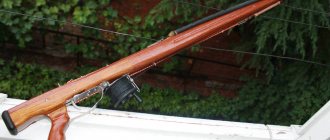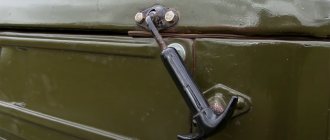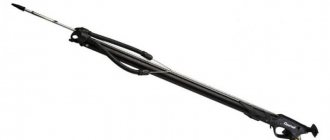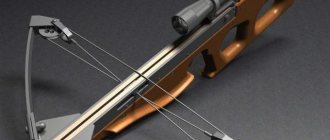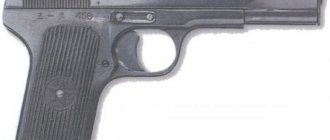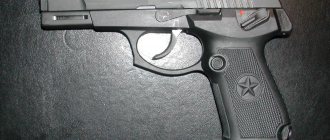There is a popular opinion among scientists and historians that war moves science forward. Many scientific inventions and discoveries found their first application in military affairs. As you know, these days the main type of infantry weapon is a machine gun. At the same time, few people know that the first prototypes of this type of weapon appeared in China in the 2nd century AD in the form of repeating crossbows.
History of weapons
This weapon was invented by a Chinese commander named Zhu Ge Liang at the turn of the 2nd-3rd centuries AD. This is an inaccurate version of weapon creation and should not be trusted too much. Archaeologists have found some elements of these weapons that already existed 600 years earlier.
If there is little information about the history of the creation of the crossbow, then you can find a lot of interesting things about its use in the future.
- Thus, it was used in the Sino-Japanese War (1894-1895), and the Boxer Rebellion (1898-1901).
- The problem was that during the Boxer Rebellion the soldiers did not have proper weapons. Because of this, it was necessary to resort to the use of crossbows.
Sorcerer or inventor
When talking about the multi-shot Chinese crossbow cho-ko-nu, it is necessary to dwell separately on its inventor Zhuge Liang, who is a cult figure in China. The future mystic, commander and inventor was born on July 23, 181 in the family of a government official. During his childhood, the boy lost both parents very early and did not speak until he was 9 years old. Taoist monks taught a child who was considered mute to talk. They also recommended their pupil, who had reached the age of 26, to the ruler of the kingdom of Shu, Emperor Liu Bei, as a commander. At that time, China was divided into three kingdoms: Wu, Shu and Wei, which were at war with each other. Zhuge Liang acted on the side of the kingdom of Shu, in which he eventually took the post of first minister. After the death of Liu Bei, the post of regent under his son was taken by Zhuge Liang, effectively becoming the full-fledged ruler of the entire country. At this time, a talented commander captured the state of Wei, annexing it to the kingdom of Shu. In total, Zhuge Liang made five successful military expeditions, and his contemporaries attributed to him the ability to control the weather, become invisible and hear at a great distance what was being said in the enemy camp. Of course, these were just legends that inevitably arose around every ancient ruler. However, in addition to mystical properties, popular rumor rightly attributed a number of outstanding discoveries to Zhuge Liang. Among them are the first land mines, a flashlight for signaling troops during battle, and, of course, a multi-shot semi-automatic crossbow. He is also credited with a number of economic inventions and culinary recipes, as well as several popular sayings to this day: “Every Zhuge Liang is in hindsight” (similar to the Russian proverb “After a fight, they don’t wave their fists”), “Dead Zhuge Liang is able to defend himself” and a number of others.
Design and principle of operation
If we talk about the design, then the cho-ko-nu is similar to a regular crossbow and differs from the latter only in the presence of a box on the stock.
- It is necessary to place up to 10 bolts in it.
- The string is threaded through a slot located at the bottom of the box.
- When the crossbow is not cocked, it is placed under the bolt located below.
- To cock the weapon, you must pull the lever.
A crossbow. - Depending on the design, the box can be retracted backwards or forwards.
- The bolt jumps out of the box and lands on the stock.
- The lever is responsible for pulling back the bowstring. At this point the structure can be considered ready to fire.
- At the end of the shot, the weapon is cocked using a lever, which is reminiscent of cocking a rifle.
arbalet-airgun
Cho-ko-nu, or Zhuge Nu, also known as an “automatic crossbow” (in reality, not even semi-automatic) is a kind of forerunner of the Gatling gun, which in turn became the prototype of modern machine guns.
At least they have a certain general principle of operation, since the reloading mechanics worked due to the muscular strength of the shooter. Only he had to not rotate the handle, while at the same time activating the movable block of barrels...
...and work with the lever, cocking the bowstring of the crossbow's shoulders:
Cho-Ko-Nu device
The arrows, under the influence of their own weight, were sequentially fed onto the guide from a kind of “box magazine” (picture below). The circle under the arrows is a cross-section of the bowstring.
In the initial stages of loading, it prevented the arrows from falling out, and after cocking it ended up in a transverse groove, from which in the final phase of movement of the lever it was simply pushed out and the shot was fired.
The effectiveness of Cho-Ko-Nu, a little history and comparisons
It is clear that the efficiency, as well as the firing distances, of Cho-ko-nu and the creations of Richard Gatling are incomparable. Well, the time interval between their appearance is almost two and a half thousand years!
In reality, the “automatic crossbow” was, rather, a weapon of self-defense, including for commoners, due to its fairly simple design, which did not require special skill in manufacturing. There are also reports of the use of poisoned bolts. Based on the totality of tactical and technical characteristics, a dozen villagers armed with Cho-ko-nu, hiding behind a fence, could easily repel the attack of a band of unarmored robbers with hatchets and knowledge of the secret techniques of the “Drunken Crane Style”. In the event of a confrontation between regular army units, such devices were unlikely to be effective.
Although... The Chinese would not be Chinese if they had not glorified the somewhat fantastic combined-arms capabilities of such an extraordinary invention in their “historical” action films.
But in the PRC, propaganda of its own history, whatever it may be, and its own achievements is a matter of national importance. In addition, if you look more closely, you will notice that in the frame from the film a crossbow is used not with poor “village” short shoulders as elastic elements, but with an almost full-fledged Asian bow. This will be discussed in the final part of this article.
And further. Zhuge Nu existed almost unchanged until the beginning of the twentieth century, while the Gatling gun had an extremely short life, and it was soon replaced by real automatic small arms. Well, this is another confirmation of the ever-accelerating scientific and technological progress of mankind, especially in the field of devices designed to destroy their own kind.
It is also worth delving a little deeper into the historical retrospective of Chinese technology. Both the crossbows themselves and their locks/triggers (pictured) were found in burials from the time of Shi Huangdi (3rd century BC).
So, even created in different workshops, as evidenced by the marks of the masters, they are completely interchangeable, that is, they are made according to the same drawings and patterns. This indicates the highest level of standardization and metrology of the ancient Chinese military-industrial complex :)).
And the weapon itself was superior in its shooting characteristics to much later Western European analogues. Primarily due to differences in elastic elements.
Take a closer look at ancient engravings: the working stroke of the bowstring for all crossbows (not easel monsters) is tiny, and it had to be compensated for by a colossal tension force.
By the way, these days the developers of a unique hunting model from Canada have taken this path (see “Crossbow “Excalibur Micro 355” - small but bold”).
And the crossbows of ancient China, unlike Europe, often used a common Asian composite bow (wood, horn, sinew) as elastic elements, which could almost be tied in a knot without damage. Therefore, the guides were quite long, and the shoulders did not require prohibitive “power”.
Drawings of Cho-Ko-Nu
But let’s return to the main character of our story today - the “automatic crossbow” Cho-ko-nu. For those who want to independently recreate this wonderful weapon, we offer the following, although not Russified, but quite working drawings.
By the way, I recently discovered very interesting instructions (with drawings) for making a crossbow, string and bolts in an old issue of Popular Science magazine (see the article “Homemade Crossbow: Greetings from 1940”).
Modern "Cobra System Adder", or Cho-Ko-Nu Crossbow in Taiwanese
We understand that someone already winces at the mention of the “Cobra System” crossbow, but PoeLang has come up with such an unusual product... The modular approach allows you to literally sculpt “new” samples on a single base. Well, we can’t ignore it and are publishing regular posts on the VKontakte public page. True, this time the developers helped us a lot.
One of the most popular queries on the site relates to CHO-KO-NU. Some are interested in its history, others - in the drawings. All this can be found in this article. But those who want to purchase such a unique thing are in for a bummer - similar designs are found only on Ali in the form of outright toys.
So thanks to the Taiwanese company (and its European branch EK Archery), which thought of equipping the Cobra with an additional device, turning it into a modern, dare we say it, high-tech likeness of Cho-Ko-Nu. In this embodiment, the product is called “Cobra System Adder”.
It has not yet appeared in domestic stores, but our old friend Jörg Sprave (sorry for the English transcription of the German surname) has already tried out the new product, which is what the video below tells about. Well, we just have to wait for Russian certification of the new Cobra and its appearance on sale.
2022 addition.
The crossbow “Cobra System RX ADDER” has finally appeared in Russian stores. Alas, the price is clearly not for children - about 33 thousand rubles. On the other hand, it feels like dads are not buying it for their children (although they may well hide behind this in front of their mothers), but primarily for themselves :)).
Efficiency and comparison
The magazine held 10 arrows and allowed 10 shots to be fired in just 15 seconds. This was the speed at which they fired from a crossbow during the above-mentioned wars. At the same time, the accuracy of the shots was very low.
There was no need to compare this weapon with rifles, since the crossbow was very far from them.
- The sight is missing.
Multi-shot crossbow. - From the chokon it was possible to hit the target from a distance of no more than 15 meters, maximum - 20.
- The bolt moved at speeds of up to 90 m/sec. However, this is the maximum figure. As a rule, the parameter was much smaller and amounted to 60-70 m/sec.
- To increase penetrating power, the bolts were lubricated with a toxic substance.
Chakram
An older reader will probably remember the film series of the 90s about the warrior Xena, who willingly used these weapons. There are several variations in the pronunciation of this Indian word. The weapon appeared there, in India. It was used by the Sikhs, a warlike people known for their military prowess.
Chakram
Source: 2qm.ru
A metal ring, sharpened to a razor-like state along the outer edge, was untwisted on the index finger and a deadly projectile 30 cm in diameter was sent at the enemy with a movement of the hand. Usually it was thrown slightly upward, and such a simple-looking throwing weapon such as a shuriken or boomerang crashed into the face or shoulders of the enemy, inflicting a mortal wound. It is not known whether it was used in antiquity, but in medieval wars in India, the chakram took many lives from Sikh opponents.
Flying raven and bee swarm
MLRS – multiple launch rocket system. Let's return to the Celestial Empire. Chinese engineers were among the first to conceive of the mass use of medieval MLRS using gunpowder.
Ancient Chinese salvo system
Source: pinterest.ru
One option was the “Flying Raven” - a cart on which was mounted a square box with many cells, each of which contained an arrow filled with gunpowder. On command, several of these carts opened fire, creating a picture of local hell in the enemy’s ranks, coupled with a great psychological effect. Not all opponents of medieval China were accustomed to deafening explosions. In addition to “raven”, “Swarm of Bees” was also used. This was the name of a smaller box that could be carried by 1-2 people, but it worked on the same principle, mainly by direct fire.
Greek fire
Another forerunner of firearms, which became especially widespread in the Byzantine Empire. Numerous wars on the seas, raids on the borders of the empire from the sea forced the Byzantine fleet to look for a means of guaranteed destruction of enemy ships.
Application of Greek fire
Source: pinterest.ru
Even our ancestors experienced the destructive effects of the “Greek fire”. An incendiary mixture was thrown from special pipes into the enemy ship; its exact composition is unknown, presumably it was a mixture of oil, sulfur, and quicklime. The train in a matter of minutes spread a fire that devoured wooden ships and burned even on the water. This mixture gave the Byzantines an advantage at sea for a long time.
Zhua
Another Chinese invention. A heavy club-club, usually made of iron. Its peculiarity was the pommel, which was made in the form of a “zhua” - an iron hand. Usually it was the paw of a bear, lion or tiger. The heavy club, equipped with “claws” on the toes, inflicted terrible wounds on enemies. And the grip of this paw was located in such a way that it was very easy for a warrior with a zhua to catch the enemy’s shield on any of the edges and tear it out of his hands. The use of zhua is well demonstrated in the feature film “The Man with the Iron Fists.”
Zhua
Source: pinterest.ru
Three-bladed dagger with springs
A very extravagant type of weapon. In the same India, it existed under the name “Qatar”. This seemingly ridiculous weapon was used during numerous duels in the Middle Ages. Often, in individual duels, warriors armed with different types of weapons met. In order to gain an advantage, it was possible to disarm the enemy. How to do it?
Dagger on springs
Source: pinterest.ru
With a slight movement of his hand, the duelist opened additional blades of the dagger (or katar) and caught the enemy’s blade. Then he acted according to the situation: he could twist his hand and knock out the weapon, break the blade, or simply stab the hesitant enemy. This category also includes various types of “swordbreakers” specifically designed for breaking enemy blades, daggers or short swords. Separately, we can mention the catarrh, reminiscent of the claws of the superhero Wolverine; the weapon looks very impressive in the movies.
Calthrop
Everyone knows what anti-tank hedgehogs look like. Now let's imagine them reduced. Hundreds of such well-sharpened small, prickly “hedgehogs” were scattered on the paths of the infantry, and especially the cavalry.
Caltrops
Source: pinterest.ru
These devices were used back in Ancient Rome. The Roman legions, predominantly composed of infantry, scattered "triboli", as they were called, to protect their flanks from cavalry attacks. High efficiency contributed to the widespread distribution of such barbed barriers; they were used in many armies of the world. Often, these days, police officers and gangsters can throw such “surprises” under the wheels of a pursuing car.
Haladi
Another Indian version of the weapon is a sword with two blades curved on either side of the hilt. Sometimes the fighter’s hand was covered by a solid handle in the shape of a spiked or simply a heavy brass knuckle. Indian Kshatriya warriors from the Rajput clan skillfully wielded such blades. Experienced warriors could take two khaladis. Then the deadly dance of blades around the warrior looked like a terrible bloody harvest. An interesting example from popular culture: one of the key characters in the Warcraft universe, the elf Illidan, wears just two haladis.
One of the Haladi options
Source: pinterest.ru

